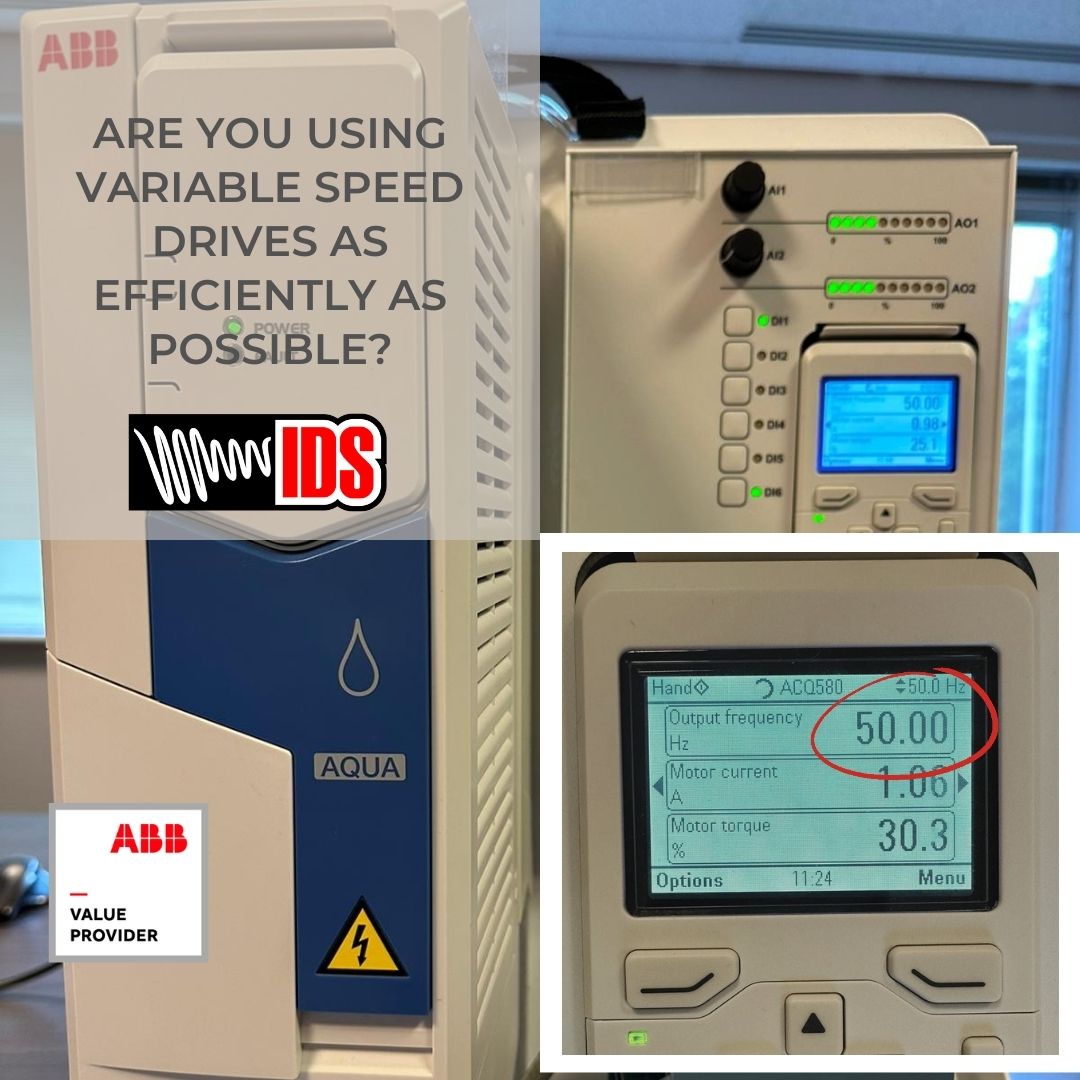Are you Using Variable Speed Drives as Efficiently as Possible?
By now it’s fair to say that people are aware that energy reduction is becoming more of a hot topic than ever. At the time of writing this article, May 2023, people are paying upwards of 31p per kWh.
Some Statistics
We all love a good statistic and one that I feel is worth noting is that in Industry, 66% of the energy used is consumed by the humble electric motor. I have seen other stats that say this is up to 25% of the UK’s total consumption. Therefore, shouldn’t these motors be a key focus for energy reduction? Well, in the industry I work in, that being the sales, supply and service of ABB drives and motors, they most certainly are. And so they should. Payback times for the investment made will vary of course, but for applications on fans and pumps, they can be well below 2 years.
Is a drive always the answer?
It’s worth stating a couple of things here though. Not every motor is suitable for a Variable Speed Drive. Estimates put this figure at 50%. If the motor is required to run constantly at full speed, a drive will add 2% inefficiency into the mix, making the application less efficient than it was before. We are always honest with our clients and will state when we believe the application is not suitable for drive control.
Drives have been used for many years. Motors are now coming more into focus, especially when we see that by using IE5 motors, up to 4.5% more efficiency can be gained. A motor is a long-term investment, so that 4.5% can make a big difference over its running life.
But, and here’s the point of me writing this article. Fitting a drive is a big step towards maximising energy efficiency, but configuring the drive to the application is also a key step.
Applications that are perfect for energy saving
For applications that we can truly class as variable torque, those which we class as centrifugal fan and pump applications, we can see energy reductions of 50% by the simple reduction in speed by 20%. This page on Cube Law explains this.
Drives are a simple solution
ABB drives are designed to be quick and easy to install. Application programming (let’s consider this as fine tuning), is done through ‘primary settings’. You don’t need a PhD in drive technology to easily and quickly get the application running, and indeed to be running as efficiently as it can be. Indeed, in the ACH580 HVAC drive, energy optimisation is turned on by default, this singular parameter can typically improve energy saving by 10%. It does this by automatically adjusting the motor flux, another benefit is that it can also reduce the audible noise of the motor. In the rest of the ABB portfolio, this parameter needs to manually turned on. It’s application specific so needs to be tested to make sure the load is suitable for it.
Maximising the energy saving potential
For the drive to run at maximum efficiency, the drive needs to know information about the driven load. In most case this is simply a choice to make between constant torque, or variable torque. The majority of centrifugal fans and pumps are variable toque loads. These form a significant part of global VSD usage. As stated above they offer the quickest payback times. The second common choice is constant toque. This is seen on cranes, conveyors, mixers, crushers and the like, but some pumps such as geared or high lift pumps are also constant torque. Here, the savings that can be achieved are directly proportional to speed, i.e. a 5% reduction is speed is a 5% reduction in energy.
But, should these loads be overlooked? Not always. Can energy be saved by looking at the load cycle, or by controlling the motor speed to match the load demand? For example, we have seen good results on hydraulic power packs and Archimedes screws by applying control algorithms that allow us to control speed vs demand. I come back to my point I made earlier, that with energy costs so high, the paybacks on these can come within desirable timelines. Also, don’t forget the extra savings that can be used by fitting, for example an IE5 motor.
Gaining greater process control
In fan and pump applications, we tend to see drives retrofitted where a mechanical damper was used to control the flow of air or water to cool, heat or extraction from a system for example. A simple solution here is to fit a drive and simply reduce the motor speed to match the flow that was seen before through mechanical damping. This is ok, but again here, with a bit of logic we can achieve further savings. By fitting a sensor that can measure for example, pressure, flow or temperature we can exactly match the motor speed to meet the demand. Further applied intelligence means we can now sense when no flow is required and therefore turn the motor off, sitting waiting for the demand to re-appear, then start the motor again. This is called PID control with applied sleep function. This can also be configured through the drive’s, easy to use keypad.
Are you Using Variable Speed Drives as Efficiently as Possible?
I hope this article gives you food for thought. In a nutshell, used and configured correctly, ABB drives are an easy option to achieve big reductions in energy. At IDS we have years of knowledge to assist you in any way you see fit. Indeed, we can calculate the savings that can be made and prove these out by using one of our extensive Hire Drive fleet.

